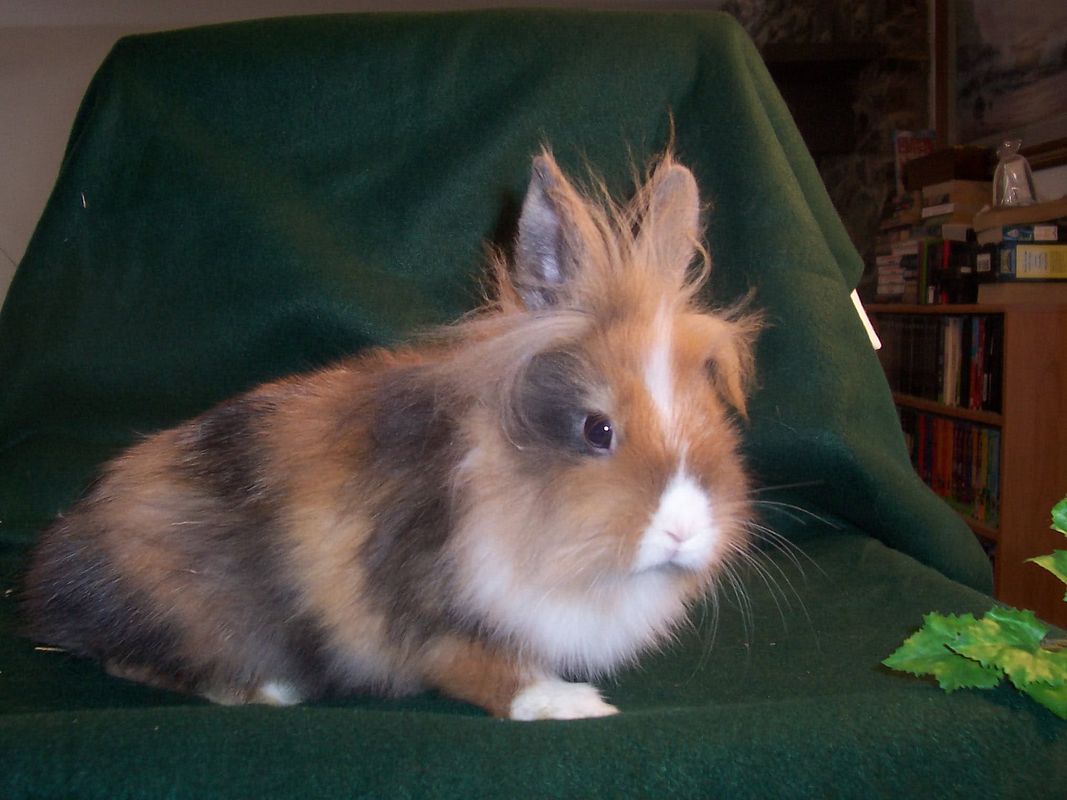We have some folks here who are new breeders - so I thought it might be nice to share some information about color & genetics. Much of what I've learned - I've learned from reading various books and numerous PMs with Pam Nock, an ARBA judge and former member here.
I am really good at certain parts of color genetics...and horrid at others. I'm hoping that someone who knows more will add on to this thread and perhaps get folks talking.
Ok....there are 5 main "genes" that make up color in a rabbit. (As I type every sentence I think to myself and silently pray, "Oh Lord...please let me phrase this right..").
The first gene is the "A" gene or "series" as Rabbit Production puts it. There are three options for this:
A - Agouti
a[suP]t[/suP] - Tan
a - Non -Agouti
(I am using Rabbit Production as my source right now).
I amNOT good at the A gene/series at all - so I'm just going to share that much and this little bit....and then move on.
Each rabbit will get one gene from itsfather (sire) and one gene from its mother (dam). So it would be possible if you mated an Agoutibuck with a tan doe to get a baby that was
Aa[suP]t[/suP]for example....taking the A from the buck and the a[suP]t[/suP] from the doe.
In genetics - the DOMINANT gene will have a capital letter used to represent it - meaning that this baby would look like an Agouti rabbit - even though it has the tan gene hidden (and that could come out in a future generation.
~~
Now let's go to a gene/series I understand! The B series!
B = black
b = brown
Now I know - you're reading this and going, "What about blue rabbits and lilac rabbits?". Well - you'll see how we get them later - but for now - trust me please that there are ONLY two major colors - black and brown - and that black is dominant. If you mate a black rabbit with a brown rabbit.....you're going to get a black rabbit that carries the brown gene (Bb).
~~~~
The C series really throws me - so I'm simply going to throw it out and let others explain it. I still really struggle with it and just can't seem to get a handle on it. The C series deals with shading...
C = full color
C[suP]chd[/suP] = dark chinchilla
C[suP]chm[/suP] = medium chinchilla (I'm not sure I've seen this one in other books I've read on genetics)
C[suP]chl[/suP] = light chinchilla
c[suP]h [/suP]= himilayan
c = albino
Let's say you take a sire with the C gene and a doe with the C[suP]chl [/suP]gene. The resulting baby (only thinking of one baby as an example here) will be a CC[suP]chl[/suP] genetically.
I sure hope we have someone here who knows more about the C gene.
~~~
Now - the "D" gene....another one I understand. "D" stands for density of color from what I understand. A "D" rabbit has dense color throughout the coat. "d" which is recessive has diluted color.
Let's go back to our rabbit who is a B (black). Please remember that each rabbit has two sets of 5 genes each (ABCDE) that it gets from its parents...
The Black rabbit who has at least one B will look black - AS LONG as it does not have dd for the density (taking one "d" from mom and one "d" from dad).
IF .. the rabbit with the B (Black) gene - has the "dd" - then you have a blue rabbit.
Now - let's take the "b" rabbit (brown). If it has the "DD" or "Dd" genes- it will be brown. However, if it gets the "d" gene from both parents and is "dd" - then it is considered a lilac rabbit.
So - it is the B and D genes working together that produce the four self colors of black, blue, brown & lilac.
~~~
Finally - the "E" gene....another one I struggle with. The possibilities are (in the order of dominance):
E[suP]d[/suP] = dominant black agouti
E[suP]s[/suP] = steel agouti
E = agouti
e[suP]j[/suP] = harlequin (WOO HOO - one of my favorites)
e = red or yellow
~~~~
There are other major coat color genes in addition to these and I don't have time to explain them so I'm going to just type them out...(I'm starting to fall asleep finally).
du = dutch
DU = normal
du[suP]d[/suP] = Dark dutch, minimal spotting
du[suP]w[/suP] = White dutch, excessive spotting
En = English
En = English Spotting
en = normal
si = Silver
Si = Normal
si = silver coat surface
v = Viennese White
V = normal
v = white coat, blue eyes
w = Wide Band
W = Normal Agouti band
w = wide agouti band
I'm going to include a picture of a doe that has the Viennese gene here so you can see how it would affect a rabbit if they were Vv. (A vv is a blue eyed white).

Ok .... genetics buffs and those who have questions.....let's talk if anyone is interested!
Peg
P.S. I used pgs. 337 - 346 in the 6th edition of
Rabbit Production to glean the information in this format!
















































































